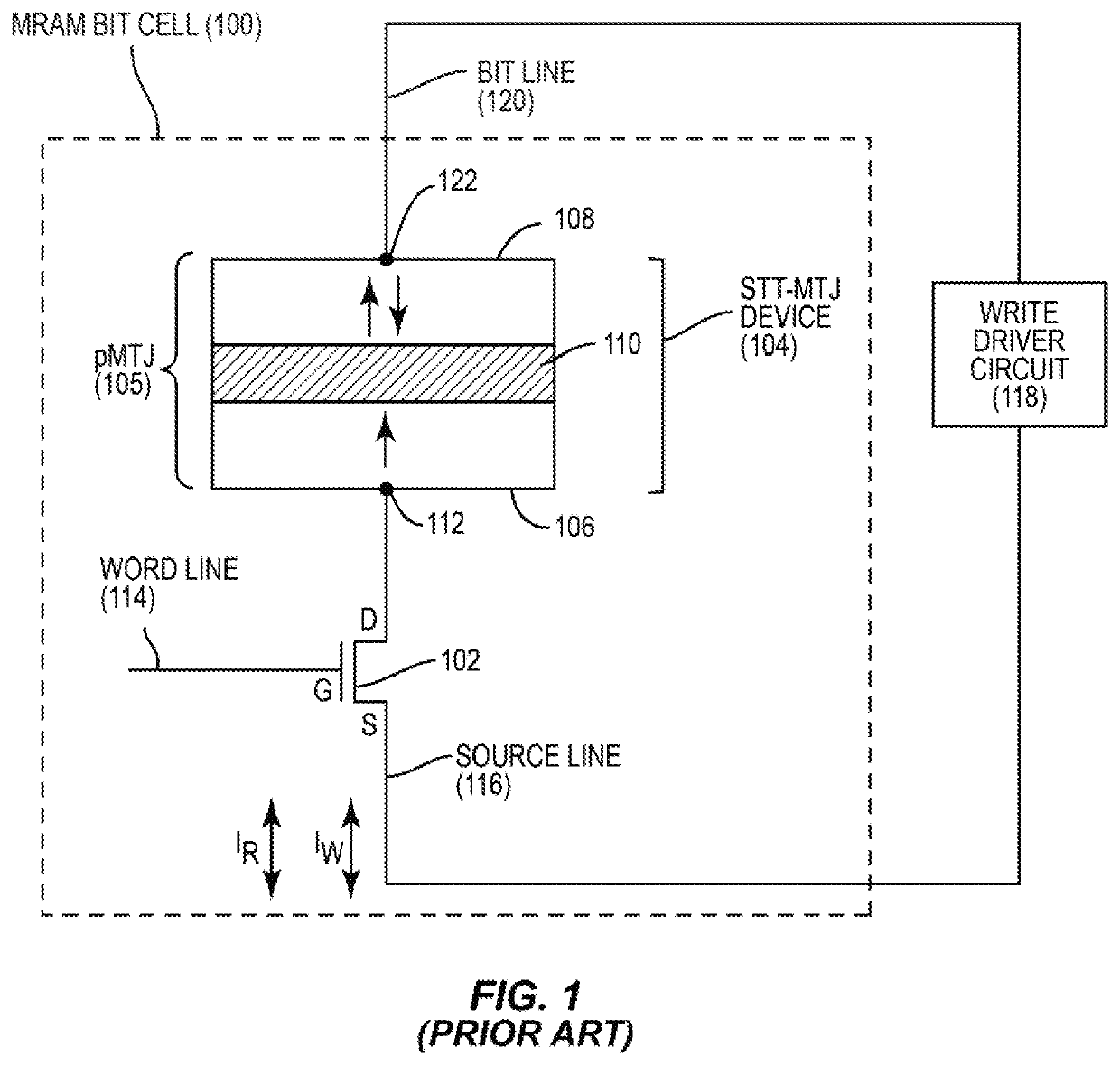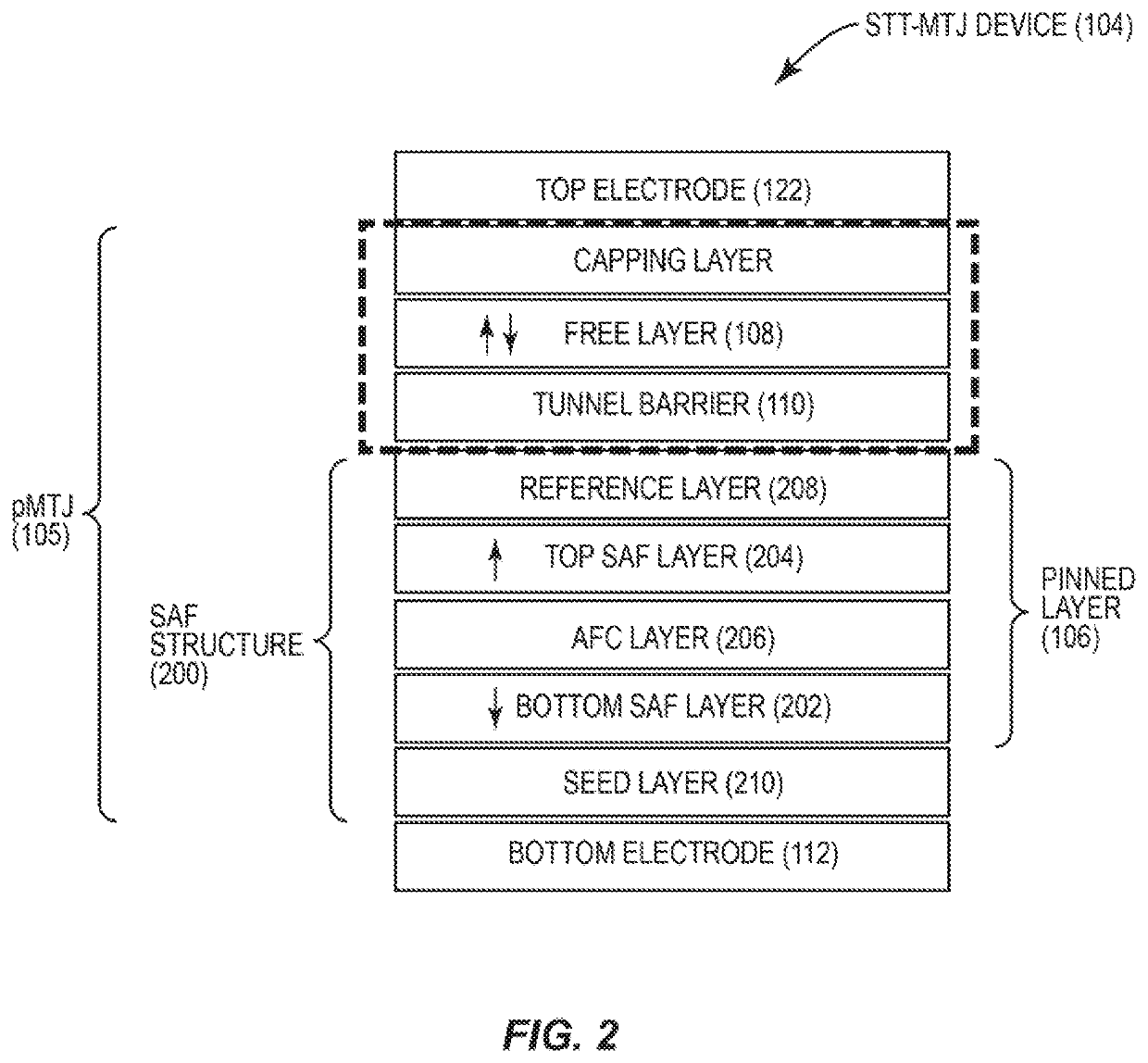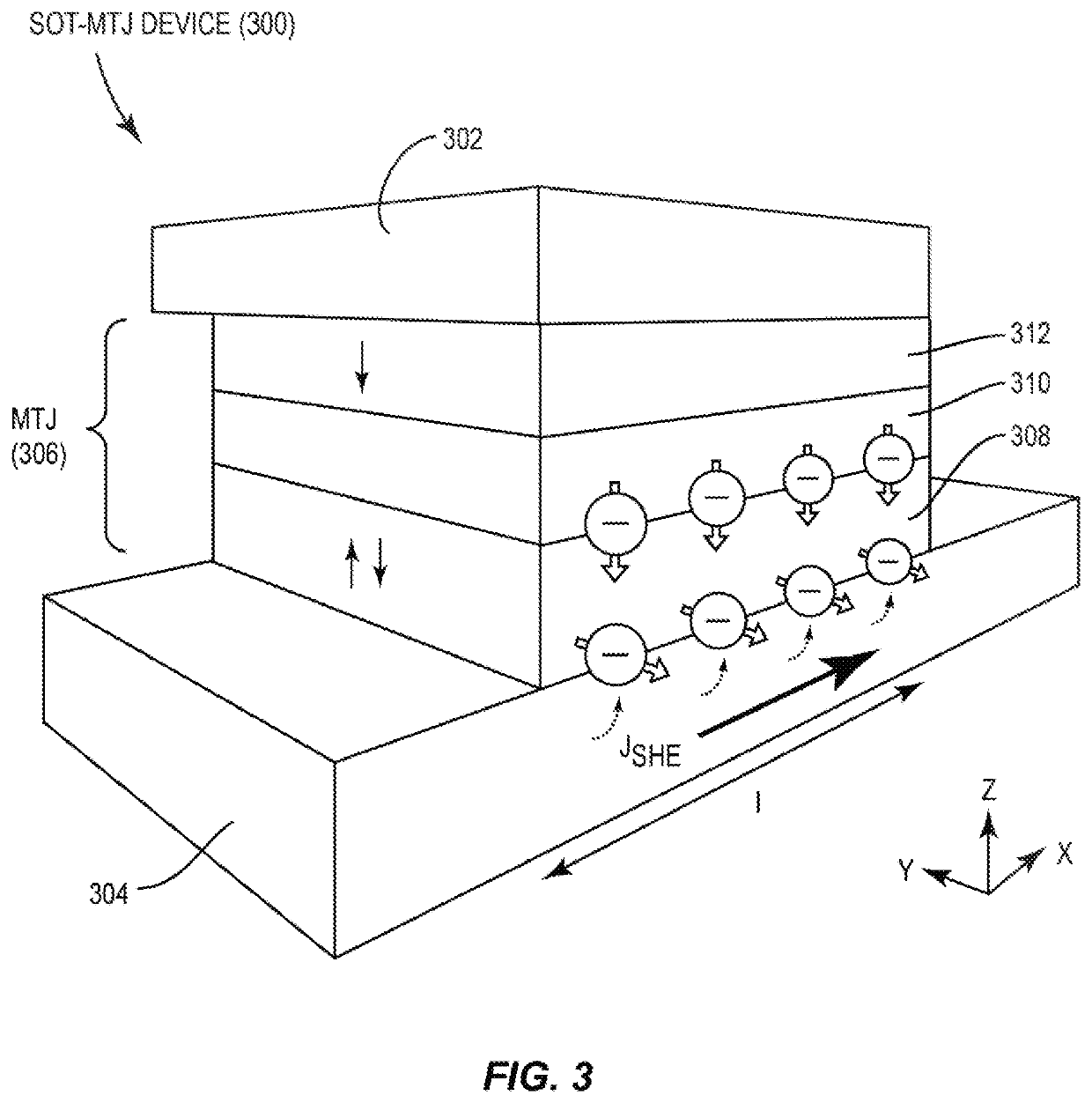Spin-orbit torque (SOT) magnetic tunnel junction (MTJ) (sot-mtj) devices employing perpendicular and in-plane free layer magnetic anisotropy to facilitate perpendicular magnetic orientation switching, suitable for use in memory systems for storing data
a technology of spin-orbit torque and magnetic tunnel junction, which is applied in the direction of magnetic bodies, instruments, substrate/intermediate layers, etc., can solve the problems of low density and high cost, low power density, and insufficient fast and low-power stt-mram devices to directly replace sram for high-performance computing applications, etc., to facilitate perpendicular magnetic orientation switching, reduce switching energy, and facilitate sot switching
- Summary
- Abstract
- Description
- Claims
- Application Information
AI Technical Summary
Benefits of technology
Problems solved by technology
Method used
Image
Examples
Embodiment Construction
[0028]With reference now to the drawing figures, several exemplary aspects of the present disclosure are described. The word “exemplary” is used herein to mean “serving as an example, instance, or illustration.” Any aspect described herein as “exemplary” is not necessarily to be construed as preferred or advantageous over other aspects.
[0029]Aspects disclosed herein include spin-orbit torque (SOT) magnetic tunnel junction (MTJ) (SOT-MTJ) devices employing perpendicular and in-plane free layer magnetic anisotropy to facilitate perpendicular magnetic orientation switching. A SOT-MTJ device facilitates SOT switching to reduce switching energy, increase switching speed, and increase endurance of the MTJ in the SOT-MTJ device. In one example, a free layer in a MTJ in the SOT-MTJ device includes both a perpendicular magnetic anisotropy (PMA) region(s) and an in-plane magnetic anisotropy (IMA) region(s). The PMA region(s) in the free layer of the SOT-MTJ device provides for the free layer ...
PUM
| Property | Measurement | Unit |
|---|---|---|
| perpendicular magnetic anisotropy | aaaaa | aaaaa |
| free magnetization | aaaaa | aaaaa |
| magnetic anisotropy | aaaaa | aaaaa |
Abstract
Description
Claims
Application Information
 Login to View More
Login to View More - R&D
- Intellectual Property
- Life Sciences
- Materials
- Tech Scout
- Unparalleled Data Quality
- Higher Quality Content
- 60% Fewer Hallucinations
Browse by: Latest US Patents, China's latest patents, Technical Efficacy Thesaurus, Application Domain, Technology Topic, Popular Technical Reports.
© 2025 PatSnap. All rights reserved.Legal|Privacy policy|Modern Slavery Act Transparency Statement|Sitemap|About US| Contact US: help@patsnap.com



